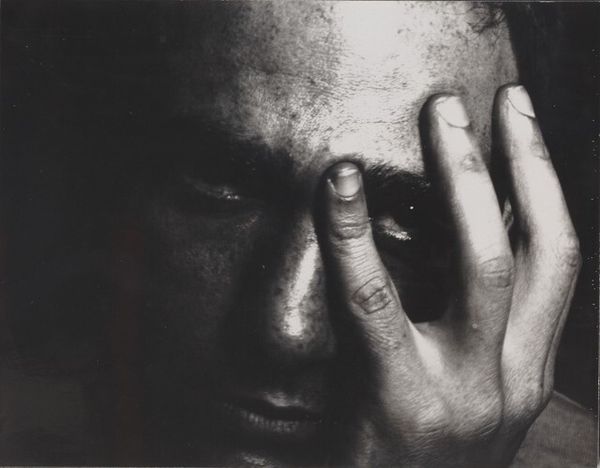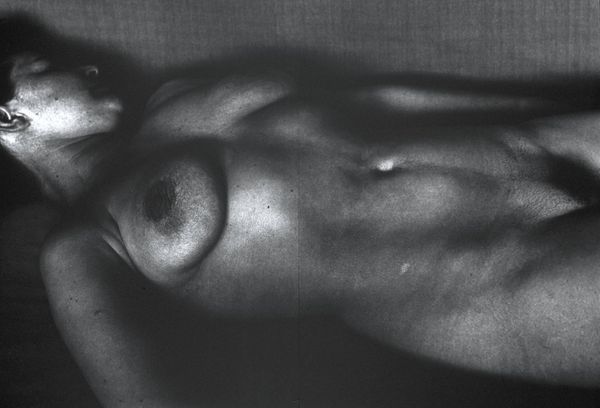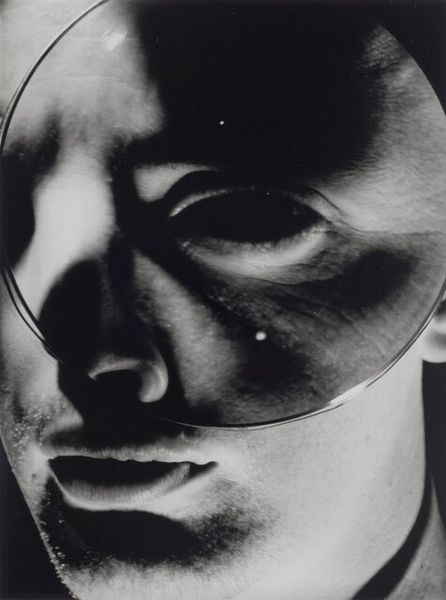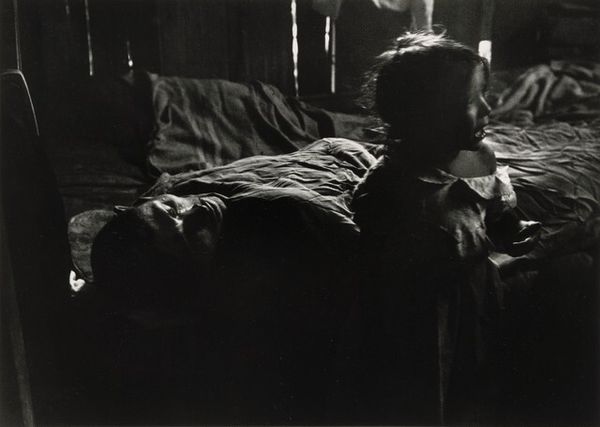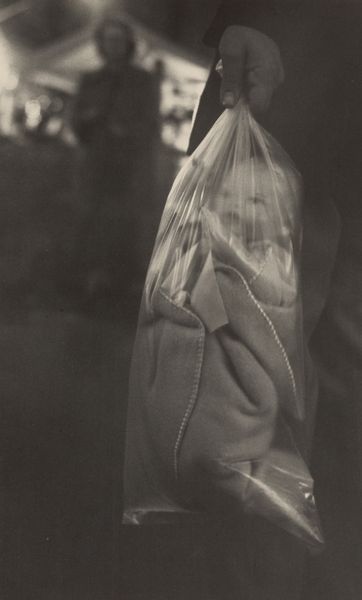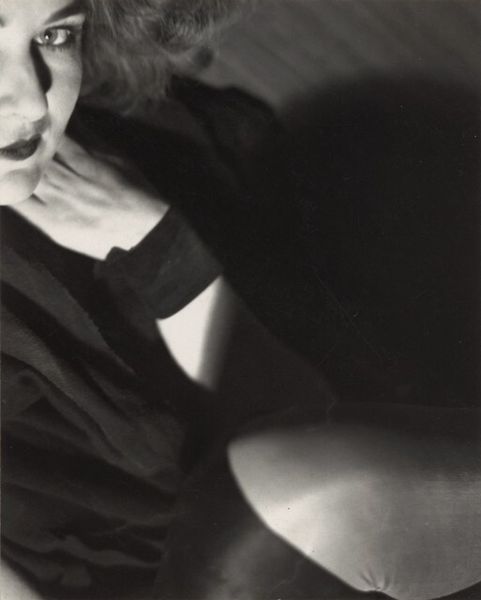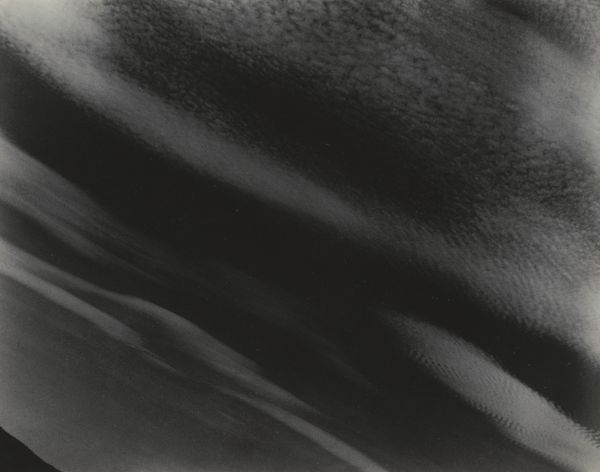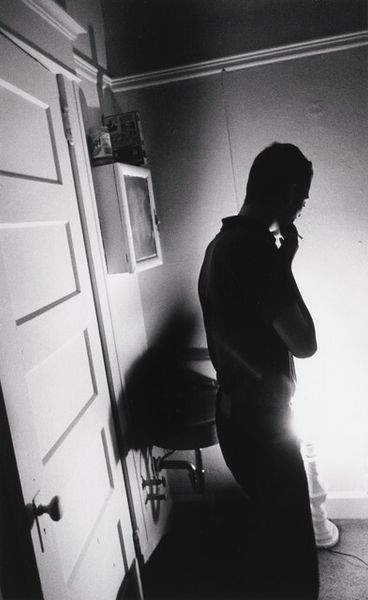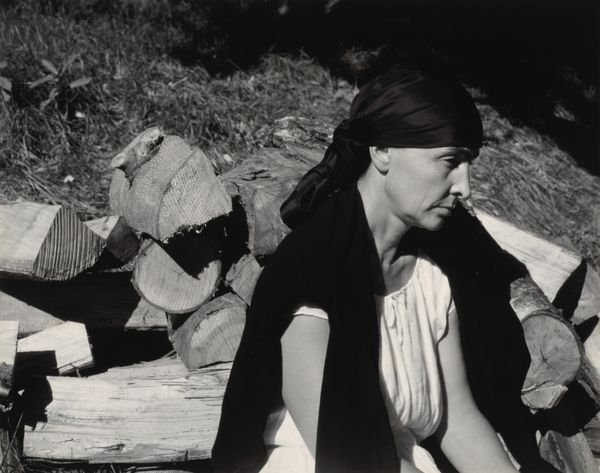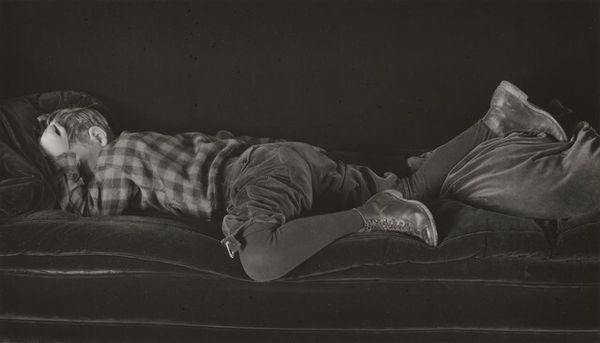
photography
#
portrait
#
portrait
#
photography
#
realism
Dimensions: image: 20.32 × 30.48 cm (8 × 12 in.) sheet: 27.62 × 35.4 cm (10 7/8 × 13 15/16 in.)
Copyright: National Gallery of Art: CC0 1.0
Curator: Here we have Eugene Richards' striking portrait from 1981, "Grandy, Hospital For Criminally Insane." What's your initial impression? Editor: The immediate thing that strikes me is how tender it is. The soft light, the man's gentle expression, and of course, the tiny bird perched on his shoulder—it all creates a surprisingly intimate and delicate mood. Curator: It's a powerful counterpoint to the implied setting, isn't it? This was shot at a facility for the criminally insane. What do you make of the pairing of man and bird? Editor: Birds are almost universally symbolic. Freedom, escape, even the soul. Here, in such a confined environment, the bird, literally alighting on him, takes on an intense, almost unbearable significance. Perhaps the patient identifies with this little bird. Perhaps it represents the part of him that seeks freedom, whether that is literal freedom from the walls, or mental freedom from constraints of his illness. Curator: That reading fits into the bigger picture when thinking about Richards’ approach as a photographer. He focuses on disenfranchised communities and his materials and techniques work towards that goal, you can feel the grain in the photographic paper and the rough texture of the textile, a raw sensibility with simple technology bringing visibility to overlooked aspects of society, using art making as social advocacy. Editor: I wonder about the material choices within the setting too. The grainy black and white and focus on surface texture really brings out the details of what look like industrial bedsheets and a very worn chair, contrasting the fineness and naturalness of the bird itself. There's a sense of decay, the ravages of time that also reflects upon the sitter. Curator: The monochrome palette feels so considered here as well. The way light falls—creating these strong contrasts and obscuring half of the face—almost visually embodies internal conflicts. How important is the portraiture? The face dominates so much. Editor: Incredibly important. It's confrontational but open. One eye is in shadow but we are able to make full eye contact. He isn't ashamed or broken or hiding; instead we're asked to confront this man's humanity beyond any preconceptions society throws upon him. It's powerful advocacy. Curator: Ultimately, what moves me about this photo is how Richards turns this potentially sensational subject into a moment of human connection. Editor: For me it's that subtle dance between confinement and possibility expressed through image, light, and symbolic forms. A haunting but important visual exploration.
Comments
No comments
Be the first to comment and join the conversation on the ultimate creative platform.
